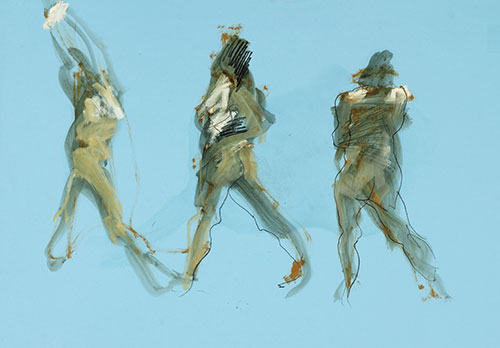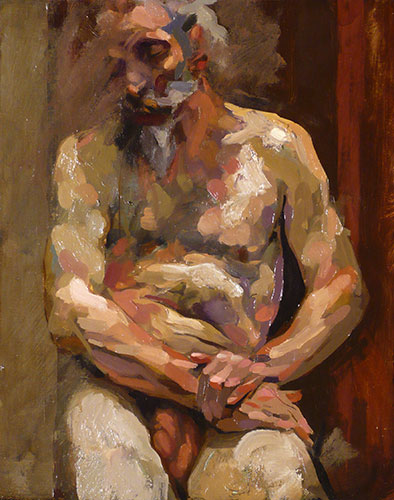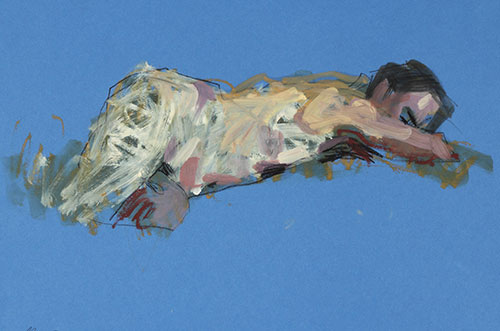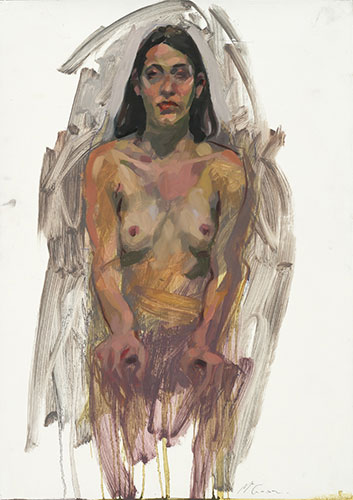Alan is one of five acclaimed artists running drawing workshops at Come Draw With Me on Wednesday 21 November at National Museum of Scotland. The workshops provide a unique opportunity to develop your drawing skills with expert tuition, in the inspirational surroundings of Animal World and the Grand Gallery.
As a west coaster, my first visit to a museum was not to Chambers Street but to Kelvingrove in Glasgow. My big sister, who was at university, took me through the galleries on a Saturday and I remember the animals and birds and the weapons and paintings. Maybe it was influential on me wanting to be an artist because there, for the first time, I saw Rembrandts and Dali’s St John of the Cross. Another, different kind of artistic influence was my father’s experience of the museum. As a schoolboy he had been part of the Glasgow schools competition to draw there. Years later he told me that when he saw how fantastic the talent was among the other boys he gave up and went away (to shove ha’pennies or some other 1940s pastime). He therefore advised me not to bother with the arts – too difficult, waste of time. Dangerous advice to give young Oedipus. And so to the arts it was, and to Edinburgh College of Art too, a double renunciation.

On my first day at art school my drawing teacher Roy Wood took us all down to the Chambers Street museum, where I spent the day happily drawing stuffed elephants and rhinos. Later, in my final year, when I had the idea of creating an apocryphal technical encyclopedia – a kind of cross between Diderot, d’Alembert and Spike Milligan – I returned to draw anatomy and astrolabes and Victorian industrial machines. What fascinated me was, I think, the latent energy of the exhibits; contained in their glass cases but seemingly radiating this energy of history, of time passed and the forces that these objects had unleashed on human development. The minerals, the animals, and the cultural and technological artifacts that are, I suppose, in a way a portrait; a portrait of who and where we are as a people, a species or a planet. This experience seemed to involve a kind of digging, an archaeological kind of looking, back and under the surface.

And now life drawing in the museum. Is drawing an activity under threat? I think in many ways it is. It seems today that the digital world has made images so easily captured, so endlessly repeatable and accessible, especially photographic imagery, that it seduces us into thinking it is simple, straightforward. The glance, the photograph, has a pace – it is the work of moments – then we pass on. But to draw requires time. To look, and look again, and again, requires a different way of being; and through the process to begin to question the act of looking. This is central I think: that in drawing we examine the terms of the engagement. To question assumptions about what and how we know. Drawing therefore requires a kind of archaeological looking too. Unearthing processes that are ordinarily hidden.

The life model in the context of the museum is an interesting juxtaposition. The contemporary and the ancient, life and death. The reference points are obvious: momento mori, “What you are I once was; what I am you will become”. But it is interesting too to realize that amongst the specimens in the museum the person, the real person, is sometimes curiously absent. We will be replacing the person, the life model, at the centre of our attention. Surrounded, like us, by the echoes of history.

Alan popped into the Museum on Friday morning to give STV’s Laura Piper a few tips here.